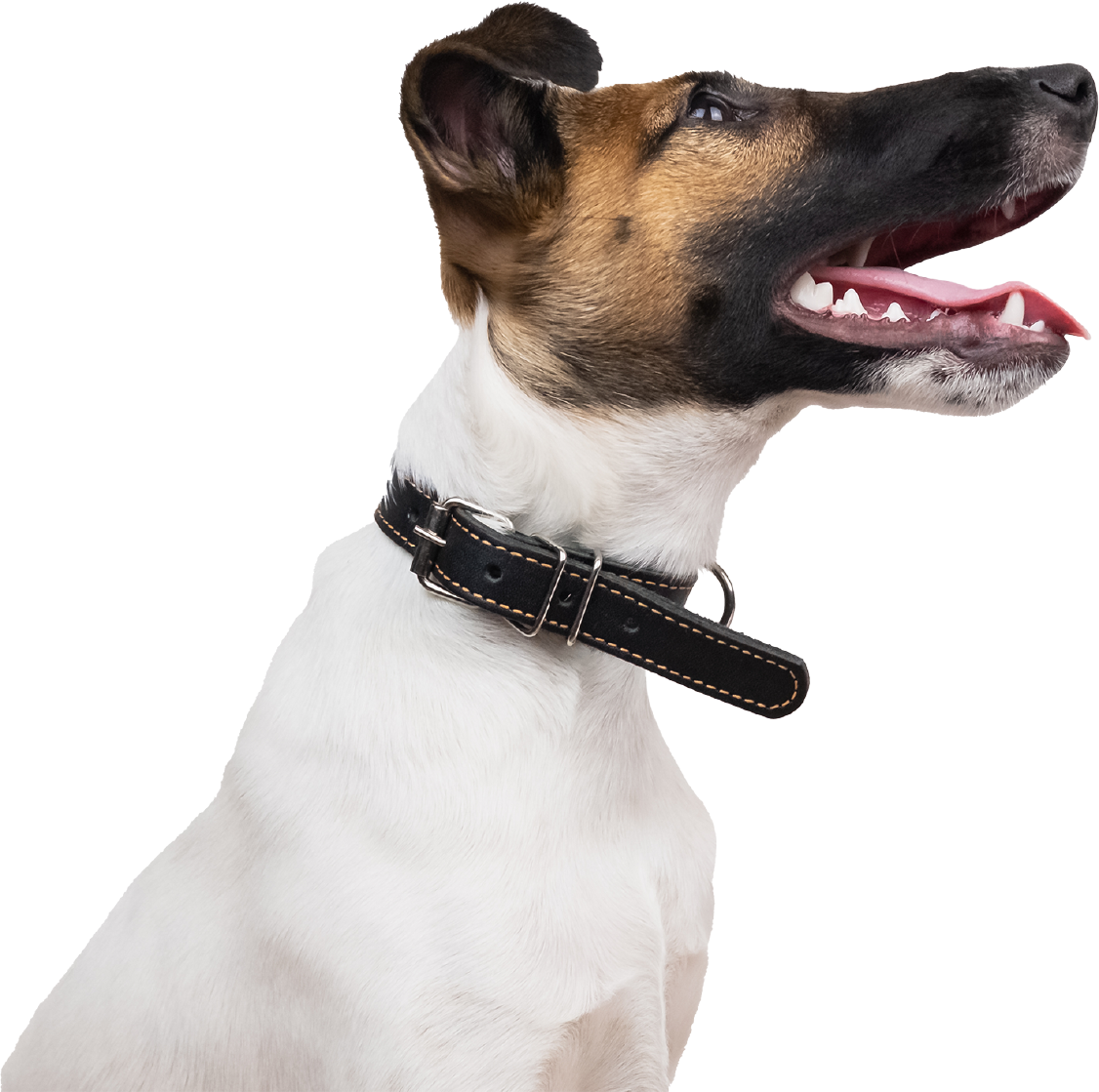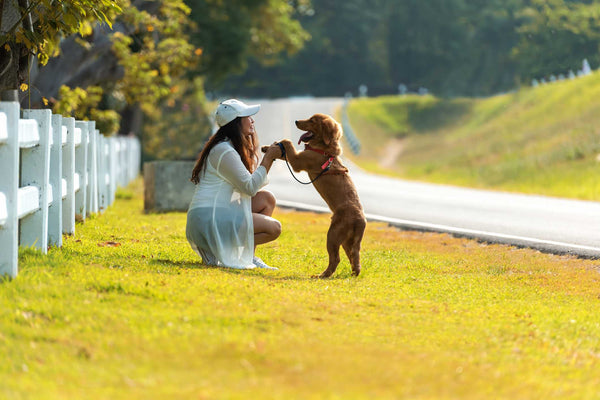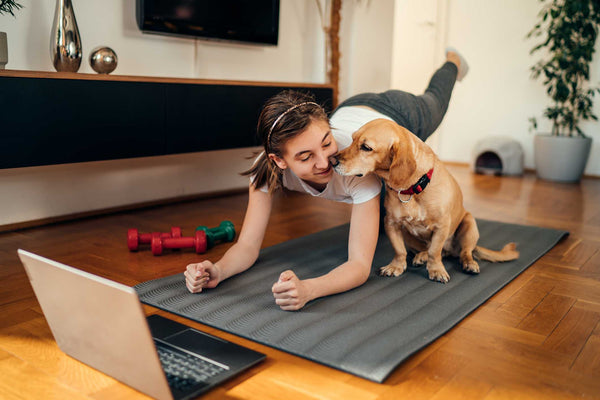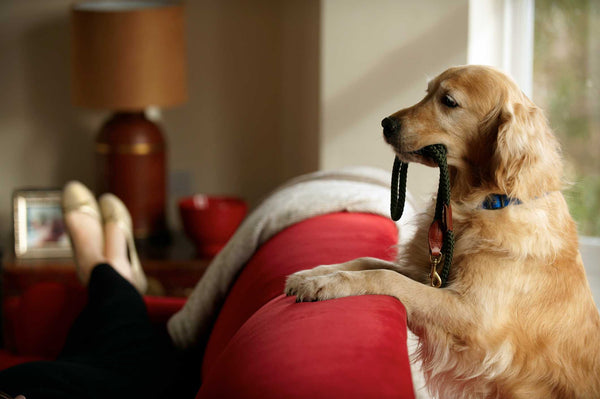Physical touch for a deeper bond with your dog

The human-dog connection is a truly special bond, and it has so many layers in all the ways we interact with one another and put trust in each other. Did you know that something as simple as the way you pet or touch your dog can either deepen the bond or strain it? All dogs are different and have their own preferences for the ways they enjoy being touched. Make sure you read your dog’s—or any dog’s—body language to determine which forms of physical touch will deepen your bond!
- Let the dog initiate contact
Just as we have to warm up to new people, animals, and circumstances, dogs must feel comfortable with you before being pet or approached. This is especially important to teach children. Rather than cornering a dog who is lying down or reaching out to pet them if they are farther away, coax them to you by bending down, patting your legs, and calling them. Once they feel comfortable approaching you, let them sniff and gather information about you. If a dog comes up to sniff you or stand near, it isn’t automatically an invitation to pet them, so allow them to take their time and assess their comfort before you reach out and touch. If it’s a dog you do not know well or if you know certain areas your dog doesn’t like to be touched, avoid petting them there, and typically avoid the head and muzzle. It’s also a good practice not to reach for the dog head-on in front of their face. Allowing any dog to initiate contact in the beginning, especially a fearful dog, is an extremely important step to build trust.
- Learn their favorite spots and reach from the side
Avoid reaching over the top of a dog’s head when petting, especially a dog you aren’t familiar with. Most dogs have personal favorite spots they enjoy being pet and scratched. Make sure you learn your dog’s so you can always give them what they love! Common favorites are the base of the tail (“butt” scratches), the chest, shoulders, base of the neck, or belly. You may learn that your dog personally does like being pet, pat, or scratched on the top of the head or behind the ears or chin. If you have taken the time to evaluate these favorite spots, then let the petting commence! If your dog, or any dog, shows signs of discomfort or fear by backing away, licking their lips, or other signals then let them retreat so that they don’t feel trapped. Petting should always be a positive experience for both you and the dog, and there are times where a dog does not view it as a reward or would prefer to be left alone. Always read body language and get to know your dog so you both feel comfortable and trust one another!
- Snuggling
If you have a dog who enjoys snuggling, this is a great way to deepen your bond. Make sure you take some time to allow them to rest their head in your lap or wrap your arms around them as you both sleep. This can allow your dog to feel secure, loved, and comforted, fully safe, and at ease. It can keep you in tune with one another and you may even be able to detect abnormalities with your pet’s health like different smells, skin bumps, or tender areas of the body. Regular physical contact is so important between dogs and owners for a variety of reasons, especially positivity! Snuggling can stimulate hormones that play a role in happiness and decrease stress for the both of you—a win-win!
- Massage
Massaging your dog not only strengthens your bond, but it can support a number of areas in your dog’s body and mind. Massage can help with anxiety and tension, if your dog has arthritis or joint concerns, and even before or after physical activities. To massage properly, start toward the top of the body and work your way down with flat palms and long sweeping motions. Always avoid spots your dog doesn’t like to be touched and never push directly on bones or joints. You can also focus on just one part of the body like the base of the neck or tail to promote relaxation, or if it might require more attention. Remember to read your dog’s body language and discontinue massaging or touching if they seem fearful, recoil, or experience pain. Now, time to treat your dog to that massage, they deserve it!
- Be mindful of situation
Petting in certain situations can be undesirable for a dog. For instance, if they are in a car or behind a fence or even on a leash, they may feel trapped and less accepting of affection. This may not be the case with our own dogs since they are likely more comfortable with us, but it is always a good idea to keep in mind for dogs we don’t know or even in situations when our dog might be feeling heightened anxiety. Physical touch and bonding always starts first and foremost with a dog’s comfort and a foundation of trust between human and dog!
Now, get to petting, scratching, massaging, and snuggling up with that furry best friend! A deep bond with a dog companion is truly beyond meaning.
 Shay Siegel is a young adult author, freelance writer, and editor from Long Island, NY. She has a BA from Tulane University and an MFA in Writing from Sarah Lawrence College. Always a lover of animals, Shay had several cats growing up. She's now a dog mom to the snuggliest rescue pit bull, Bernie. She enjoys writing on a variety of topics and sharing her love and knowledge of animals with others!
Shay Siegel is a young adult author, freelance writer, and editor from Long Island, NY. She has a BA from Tulane University and an MFA in Writing from Sarah Lawrence College. Always a lover of animals, Shay had several cats growing up. She's now a dog mom to the snuggliest rescue pit bull, Bernie. She enjoys writing on a variety of topics and sharing her love and knowledge of animals with others!

Ready to gain some healthy superpowers?
Looking to support your dogs immune system or digestive health? Need joint or calming support?
Let Waggy Show you the way



